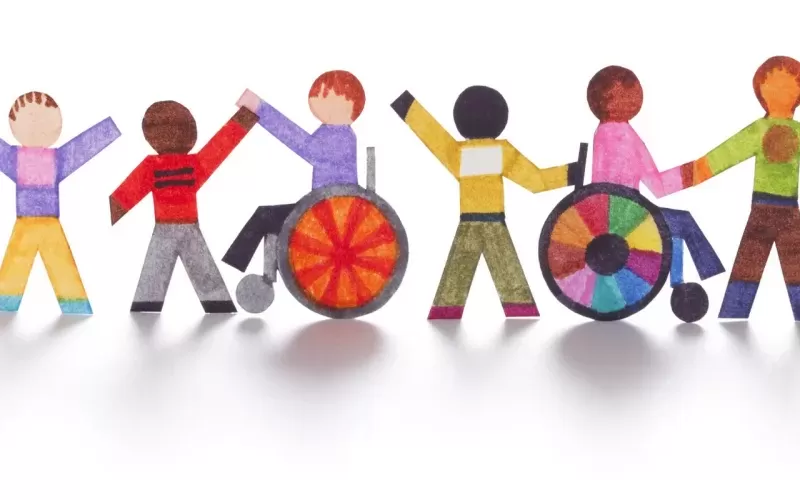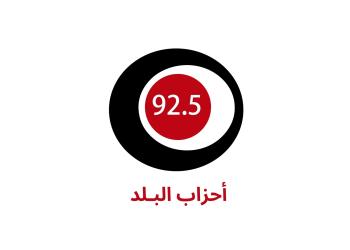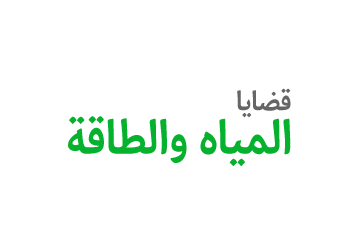
Translated by Edie Elliott
“Your daughter will never be a human being. Take her and educate her at home. No school will ever accept her.” This was the teacher’s response to the mother of Maya, a five-year-old girl who suffers from attention deficit hyperactivity disorder (ADHD) and a speech impediment, when she tried to enrol her daughter in a state school, which, she said, was not equipped to accept students with disabilities. This callous response affected Maya’s mother, and, in her words, prompted her to home-school her daughter for a period of time. Meanwhile, she began searching for an inclusive school that would give her daughter the right to an education, especially after many schools refused to accept Maya, considering her condition ‘difficult to manage’ thus exacerbating the family’s challenges.
Since Maya was two and a half, her mother noticed her hyperactive behaviour, as well as a lack of concentration and difficulty speaking. After multiple visits to the doctor, she was diagnosed with ADHD. She began treatment to alleviate the symptoms and at the age when Maya was expected to enter into a school, her mother began research to find a school that could support her daughter academically.
Eventually, Maya’s mother found a school that would accept her, but she faced an environment lacking in academic support. Maya was subjected to bullying and ignored by the teachers, increasing her aversion to school and, according to her mother, making it difficult for her to integrate with her classmates. Her mother was then forced to accompany her daughter to school daily for four years, in an effort to alleviate her suffering and offer her educational support. This was despite the financial and social burdens involved, especially due to the family’s inability to provide a ‘shadow teacher’, a necessary support for children with disabilities.
Maya’s mother is not alone in her suffering; many mothers in Jordan face this harsh reality as they are forced to accompany their children to classes to ensure their right to education.
It’s reported that the number of persons with disabilities in Jordan is 1.25 million, equivalent to 12.5% of the population, which is close to the global standard of 15%, according to estimates by the Higher Council for the Rights of Persons with Disabilities.
What do the laws stipulate?
The Jordanian Constitution guarantees the right to education for all. As Article 6 states, “the state guarantees work and education within the limits of its capabilities and ensures peace of mind and equal opportunities for all Jordanians.”
To ensure this right, Jordan ratified the 1989 United Nations Convention on the Rights of the Child, which guarantees the rights of all children to education and training, so that they can become self-reliant and capable of social integration.
The Salamanca declaration, issued in 1994 by UNESCO in Spain, also reaffirms the rights of students with disabilities to an education equal to that of their peers.
The 2006 Convention on the Rights of Persons with Disabilities, which Jordan ratified and published in the Official Gazette in 2008, affirms the right for education without exclusion. Article 24 states that people with disabilities shall not be deprived of free and compulsory education and allows them the opportunity to learn on an equal basis with their peers.
Inclusive schools, yet…
Although the Rights of Persons with Disabilities Law No. 20 of 2017 guarantees children’s right to education within an inclusive environment and prevents the exclusion or deprivation of education due to disability, this goal has not yet been sufficiently achieved as required according to many disability rights activists.
Doctor Ikram Marashdeh, Director of the Community Rehabilitation Centre for the Disabled, explains that the legal texts that emphasise the integration of children with disabilities and ensure their full access to educational services still face significant challenges in execution.
Marashdeh adds that inclusion means providing care for all students regardless of mental or physical differences, viewing them as human beings who should have a place in society, and establishing their right to participate and learn alongside their peers.
To achieve this, according to the guidance, inclusive education demands expanding the capabilities of school staff and working to remove the material barriers and obstacles that may prevent access, attendance, and participation of persons with disabilities in order to provide quality education and bring about educational achievements for all students.
However, according to Marashadeh’s expertise, people with disabilities and their families face increased challenges due to the lack of facilities available in the present inclusive schools. Although these schools are provided by the ministry of Education, they do not meet the necessary prerequisites of accessibility, as the implementation of the integration process does not exceed 10%.
These challenges, according to Marashdeh, range from the lack of wheelchair-accessible entrances to bathrooms that lack full accessibility. Furthermore, some specialised rooms, such as resource rooms which provide support sessions for children with disabilities, may be unavailable or inadequately equipped, and are sometimes converted into separate classrooms, relegating children with disabilities to educational isolation.
Families also face the problem of the distance between inclusive schools and their homes, making access to them a daily challenge, especially given the lack of suitable transportation. Despite the Ministry’s support for students with disabilities who are forced to enrol in specialised schools, these institutions may not be adequately equipped.
For schools to become truly ‘inclusive’, Marashdeh emphasises that the process must not be limited to providing infrastructure alone, rather it requires training the educational staff, from teachers to guards, on how to work with students with disabilities in a way that ensures their integration and supports their development.
Mujtaba and ‘supportive education’.
Naima Alnaimat, Mujtaba’s mother, tells the story of her struggle to secure her son’s right to education. Her family lives in an area with only one state school that offers a limited integration program, forcing her to enrol Mujtaba, who has a hearing impairment, in this school.
From the first day, Naima became the daily companion for her son, sitting beside him and helping him in his lessons in the absence of specialised educational support.
The challenges did not stop here. This demanding responsibility also affected Naima’s family life, as tensions arose with her husband, who found it hard to accept the situation. In a predominately female learning environment without adequate facilities, it was difficult for Mujtaba to achieve the necessary social and academic interaction.
After years of patience, Naima succeeded in transferring Mujtaba to another inclusive school specialising in hearing impairments, where he began to show clear progress in his learning and interaction. In this school, he found a supportive environment that appreciated his needs and celebrated his talents.
Doctor Sumaya Abu Ras, principal of an inclusive school, believes that successful integration requires the supplication of specialised teachers and a thorough understanding of each student’s needs. For example, deaf students who receive cochlear implants at a young age may integrate easily, but children who receive these implants after the age of eight face greater difficulty due to the lack of teachers who know sign language.
Abu Ras explains that the integration process doesn't just mean providing a place for the student in the classroom. Rather, it must be accompanied by efforts to train teachers and fellow students to support and interact with them. She points out the importance of providing activities that help deaf students gain self-confidence, such as utilising sign language in the morning assembly and encouraging participation in the school radio.
She emphasizes that the integration of children with disabilities is not just a decision, it's a responsibility that requires building a supportive and coordinated educational environment, so that the children feel like they are truly a part of the school community and receive the opportunities they deserve to develop and learn.
According to estimates by the Ministry of Education, the number of students with disabilities who are enrolled and integrated into schools increased from 20,000 in 2018 to 28,600 in 2024.
The Role of the Ministry of Education
Following the issuance of Law No. 20 of 2017 on the Rights of Persons with Disabilities, which set a two-year grace period for government institutions and sectors to adjust their status in accordance with the provisions of the law, the Ministry of Education launched the National Strategy for Inclusive Education in 2020, which includes nine key pillars aimed at achieving inclusive education by 2030.
Based on this, the Ministry began implementing codes for inclusive education, which ensure a safe school environment for students with disabilities and allow them the freedom to navigate school facilities independently. The Ministry also began collaborating with the Higher Council for the Rights of Persons with Disabilities to support the integration of students with disabilities into educational institutions on an equal basis with other students.
Primarily, these codes include preparing the school environment to accommodate students' needs and requirements, appointing teaching assistants in schools, training teachers, and providing diagnostic and evaluation services for students with disabilities, in addition to intervention services to enhance their skills and knowledge from an early age, which will positively impact their educational journey the components also include psychological and social support for students and their families, as well as programs to raise awareness, advocate for, and combat negative attitudes toward inclusive education.
One year before the strategy was launched, the number of students with disabilities enrolled in educational institutions was estimated at approximately 19,000, distributed across approximately 1,000 schools, known as "schools receiving students with disabilities." With the implementation of the strategy and the achievement of the nine components, student enrolment rates have increased, reaching approximately 28,600 students in the 2023-2024 academic year, according to the Ministry's estimates.
GRAPH
Acknowledging the challenges
The Ministry acknowledges that, since beginning its work to develop an inclusive educational environment, it has faced challenges in implementing laws, regulations, and strategies for providing an inclusive educational environment that enables true independence for students with disabilities. However, it seeks to overcome these challenges through continuous monitoring and gradual development of strategies, according to the Director of the Inclusive Education Department at the Ministry of Education, Doctor Mohammed Al-Rahamna.
Al-Rahamna emphasises that this support includes providing classroom arrangements and facilities tailored to each type of disability, enabling students to learn alongside their peers without obstacles, in addition to the assistance provided by the support teacher and the multidisciplinary intervention team.
Al-Rahamna explains that the Ministry faced several challenges when preparing the National Strategy for Inclusive Education. It depended on the experiences of other countries to identify potential challenges, then developed a comprehensive plan to overcome them. One of its first steps was to provide support teachers in inclusive schools. 350 teachers were appointed in the first phase, equipped with job description cards that included specialised tasks in teaching and assessing students, and supporting teachers in educational subjects.
To expand support, the Ministry has worked to retrain resource room teachers specialising in learning difficulties into support teachers, expanding their role to include working with all students with disabilities. This has increased the number of support teachers to 1,365 in Ministry-affiliated schools, enhancing the quality of inclusive education.
Additionally, with the financial support of partners, 167 multidisciplinary specialists have been appointed. Their specialties including physical and occupational therapy, speech and language disorders, and audio-visual rehabilitation. These specialists are deployed in schools to help students with disabilities overcome health challenges that may hinder their progress.
The Ministry has also launched 29 specialised training courses to improve teachers' efficiency and enhance their skills in working with students with disabilities, such as how to adapt curricula to suit their abilities to achieve the desired learning outcomes.
These challenges have been mitigated due to achievements such as the provision of medical supplies for students, including glasses, hearing aids, wheelchairs, and magnifying glasses, depending on the nature of each disability, to facilitate an easy access to educational content.
There are 404 support teachers, male and female, working in inclusive schools in total, in addition to 168 specialists in the fields of physical therapy, occupational therapy, speech and language therapy, visual rehabilitation, and auditory rehabilitation.
GRAPH
Schools and Support
The Ministry of Education seeks to provide an environment that is both inclusive and facilitates independence for students with disabilities by equipping schools with facilities that allow them to move freely without assistance, both in classrooms and throughout the school, according to Al-Rahamna.
To achieve this, Al-Rahamna notes that the ministry has allocated approximately 1,200 schools to accommodate students with disabilities and has established 240 schools that are pioneering inclusivity, capable of accommodating all types of disabilities thanks to their comprehensive facilities.
If these facilities are not available in some public schools, Al-Rahamna confirms that students are subsequently enrolled in private schools, and the ministry covers part or all of the fees, especially for cases such as cerebral palsy. He adds that the number of students enrolled in private schools has reached 2,000. If there are no available schools nearby that meet the student's needs, the ministry provides transportation services or covers the costs of enrolling in a private school. To ensure that students who have dropped out of formal education return to structured schooling, the ministry offers alternative programs that take into account the age groups of the students in comparison with their peers.
Al-Rahamna affirms that school admission is a guaranteed right for students with disabilities, and that no student may be excluded from this right due to their disability. It is therefore essential that appropriate solutions are provided to ensure students enrolment in a supportive educational environment, in accordance with the provisions set out by Article 17 of the Law on the Rights of Persons with Disabilities.
Regarding the concept of the ‘shadow teacher’ in the education system, the Ministry notes that they consider this term invalid, as it contradicts the aim of inclusive education being to achieve complete independence for students with disabilities.
Inclusive Education Strategy
As part of its ongoing efforts to promote inclusive education, the Ministry, in cooperation with the Higher Council for the Rights of Persons with Disabilities, recently launched a ten-year strategic implementation plan for inclusive education for 2024 to 2027. This plan is based on the Ten-Year Strategy for Inclusive Education, in accordance with Article 18 (e) of the Law on the Rights of Persons with Disabilities. This programme embodies the involved authorities’ commitment to ensuring the right of every child to education in an environment that takes into account their needs and supports their rights.
The Director of the Council's Inclusive Education Directorate, Issar Mazahra, explains the Council's strategic role in supporting people with disabilities, starting with providing technical support and training for teaching staff and raising awareness among institutions, all the way to contributing to the formulation of policies and legislation that guarantee the rights of students with disabilities in schools.
Mazahra points to the close cooperation between the Council and the Ministry, which annually reviews the students' conditions and prepares reports that are then submitted to Parliament and the Prime Minister's Office to guide administrative plans and implement the necessary recommendations.
As part of its commitment to supporting inclusive education, in 2021 the Council hired 57 support teachers in various schools across Jordan, fully funding their appointment for the first year, to provide an inclusive learning environment for students with disabilities. According to Mazahra, their close coordination with the Ministry continues to ensure the sustainability of this program.
However, Mazahra emphasises that the plan faces resource challenges, making the continuity of the projects dependent on the support of corroborative organisations. To achieve the goals of the ten-year strategy, the plan aims to increase the enrolment rate of children with disabilities in mainstream schools to 10% by 2031, ensuring that they receive quality, integrated education within an educational environment that encourages diversity and supports the varied needs of students.
The implementation plan for the ten-year strategy is based upon a set of key pillars, including organisational structure, policies and legislation, and media and advocacy, as well as surveys, diagnosis, and referrals. It also addresses accessibility and facilitation arrangements, learning and teaching programs that provide supportive and quality education, through building capacities, and human resources provision.
This report was produced by Wish Box Media as part of the Qarib program, implemented by the French Development Agency (AFD), with funding from the French Development Agency.












































